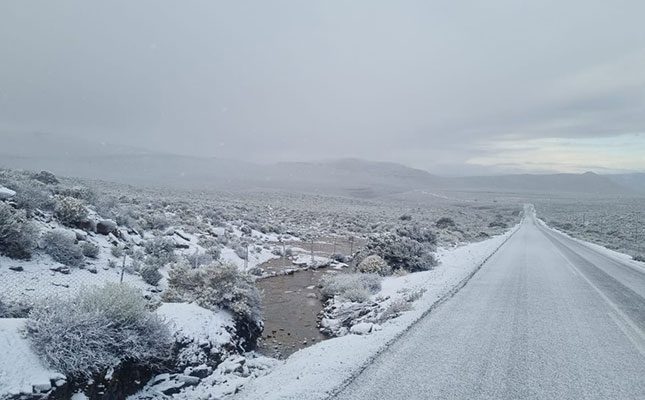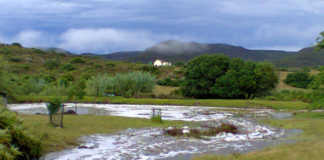
The South African Weather Service reported snowfall over many high-lying areas of the Western Cape and south-western Northern Cape on Monday, with the cold front moving to Gauteng, Limpopo and Mpumalanga on Tuesday.
The cold front is expected to move east and exit the country today, causing a significant drop in temperatures over the eastern parts of South Africa, and a slight improvement in day-time temperatures in the west.
The weather services issued several warnings concerning wet conditions and disruptive snow in these parts, as well as fire alerts, because of dry conditions, in the stretch from Willowmore to Patensie in the south, and up to Middleburg to Indwe in the north.
Daan Brink, technical adviser of Fruitmax Agri, told Farmer’s Weekly that the cold was not yet a problem for deciduous fruit farmers, although it might turn into a problem if it continued much longer.
“The season seemed to start two to three weeks early in the Elgin Grabouw Vyeboom Villierdorp region, but stopped again when the cold started. The cold, however, will impact bee activity, and in turn pollination, which might negatively affect varieties that have already flowered. These are primarily early flowering stone fruit.”
Brink added that deciduous fruit farmers were generally optimistic about the coming season, as they had a good, cold, winter and sufficient water to take them through the coming production season.
James Faber, who farms near Barkly West in the Northern Cape, said the cold could negatively affect animal production.
“It seems to be colder than usual on my farm. I have not suffered any losses yet, but the calving and lambing season has already started, and the cold means you should manage feed and supplements very carefully to prevent a loss of condition in your animals. These fluctuations in hot and cold weather are also increasing the risk of certain animal diseases, like pneumonia.”
Andre Kirsten, who farms in the Swartland, told Farmer’s Weekly that this type of weather was normal for September in his region: “We have not experienced such cold in September for a while, but it is the old normal for September.”
As far as production was concerned, Kirsten said his vineyards had already bloomed but this was not yet a problem.
He was excited about the impact of the cold and rain on winter cereal production: “Every drop of rain that falls now will be a cent added to grain income. This weather is only good for us.”










